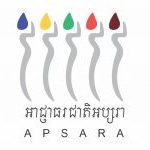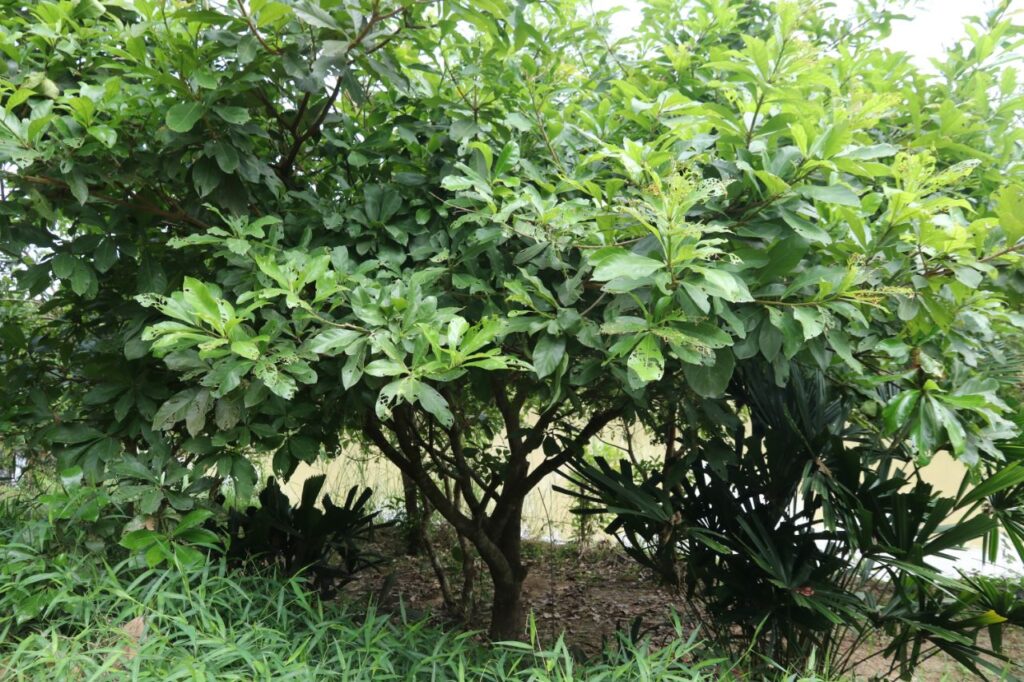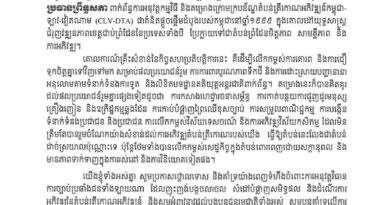ក្រៅពីដើមឈើប្រណិត និងដើមឈើលម្អ ក្នុងនោះអាជ្ញាធរជាតិអប្សរា ក៏បាននិងកំពុងបណ្ដុះប្រភេទ រុក្ខជាតិត្នោត ដើមរាំង ដើមស្ដៅ និងដើមអំពិលផងដែរ ដ្បិតរុក្ខជាតិទាំងនេះមានភាពធន់នឹងទឹក និងអាកាសធាតុ ដែលអាចឱ្យគេយកទៅដាំដុះនៅជើងទំនប់ និងទីទំនាបលិចទឹកបាន។
លោក ញ៉ែម រស្មី មន្រ្តីបច្ចេកទេសនាយកដ្ឋានគ្រប់គ្រងទឹក ព្រៃឈើ និងហេដ្ឋារចនាសម្ព័ន្ធ បានឱ្យដឹងថា ច្រើនឆ្នាំមកហើយ ដែលអាជ្ញាធរជាតិអប្សរាបានចាប់ផ្តើមបណ្ដុះរុក្ខជាតិត្នោត និងដើមរាំង ជាដើម ដើម្បីទុកដាំនៅតាមជើងទំនប់បុរាណ ទំនប់ធ្វើថ្មី និងតាមបារាយណ៍ជាដើម ព្រោះរុក្ខជាតិទាំងនោះ ងាយស្រួលថែរក្សា ហើយធន់នឹងអាកាសធាតុ។ តួយ៉ាងដូចជាដើមរាំង រុក្ខជាតិនេះមានភាព លូតលាស់លឿនពេលដាំនៅតាមជើងទំនប់ជិតទឹក ហើយវាក៏អាចរស់នៅក្នុងទឹករយៈពេលយូរដល់ទៅ ៦ខែ ឬលើសនេះក៏មាន ដោយមិនបារម្ភខ្លាចងាប់ឡើយ។ ជាក់ស្ដែង តាមការបញ្ជាក់ពីលោក ញ៉ែម រស្មី អាជ្ញាធរជាតិអប្សរា បានដាំដើមរាំង និងត្នោតជិត២ពាន់ដើមនៅម្ដុំសំណង់ទ្វារទឹកតាសោម ដែលបច្ចុប្បន្នពួកវាមានភាពលូតលាត់ល្អ និងមានអាយុចន្លោះ ៥ឆ្នាំ ទៅ១០ឆ្នាំ។
ក្រៅពីជួយការពារជើងទំនប់មិនឱ្យហូរច្រោះដី ក្នុងនោះប្រភេទរុក្ខជាតិខាងលើ ក៏មានអត្ថប្រយោជន៍ សម្រាប់ការរស់នៅប្រចាំថ្ងៃរបស់ប្រជាពលរដ្ឋផងដែរ។ ដូចជាដើមរាំង ដើមស្ដៅ និងដើមអំពិល ពលរដ្ឋអាចអាស្រ័យផលដោយបេះធ្វើជាបន្លែសម្រាប់បរិភោគ សម្រាប់លក់ និងធ្វើជាឱសថផងដែរ។ លោក ញ៉ែម រស្មី បញ្ជាក់ថា ការបង្កើនការដាំត្នោត ជាផ្នែកមួយជួយលើកកម្ពស់រុក្ខជាតិតំណាងជាតិ និងរួមចំណែកអភិរក្សរុក្ខជាតិនេះកុំឱ្យបាត់បង់ផង។
ស្ថានីយបណ្ដុះកូនឈើក្រាំងក្រូច ជាទីតាំងដែលអាជ្ញាធរជាតិអប្សរាប្រើប្រាស់សម្រាប់បណ្ដុះប្រភេទ ដើមត្នោត ដើមរាំង ដើមស្ដៅ ដើមអំពិល និងដើមរុក្ខជាតិដទៃទៀតសរុប១៥ប្រភេទ។
គួរបញ្ជាក់ថា គិតចាប់ពីឆ្នាំ២០១៤មក អាជ្ញាធរជាតិអប្សរាបានដាំដើមរាំងសរុបប្រមាណ៣ម៉ឺនដើម និងដើមត្នោតប្រមាណ៥ពាន់ដើម។ ចំនួននេះមិនរាប់បញ្ចូលការដាំរុក្ខជាតិផ្សេងៗទៀតទេ។ តាមរបាយការណ៍ ក្នុងឆ្នាំ២០២៣កន្លងទៅ អាជ្ញាធរជាតិអប្សរាបានដាំកូនឈើ ក្នុងឧទ្យានអង្គរ ជិត៣ម៉ឺនដើម និងជាង២លានដើម គិតពីឆ្នាំ២០០៤មក៕
អត្ថបទ៖ នាង សំណាង
រូបភាព៖ ភោគ ជា
The APSARA National Authority has been actively planting palm trees and other types of trees in the areas surrounding ancient dams, new dams, and barays. These plants are chosen for their ability to withstand various weather conditions, including flooding.
According to Mr. Nhem Raksmey, a Technical Officer of the Department of Water, Forestry, and Infrastructure Management, these plants are easy to care for and can survive in water for extended periods. For example, palm trees grow quickly when planted near water and can tolerate being submerged for up to six months or more. The APSARA National Authority has already planted nearly 2,000 trees around the Ta Som water gate, which are now between 5 and 10 years old.
In addition to preventing soil erosion around the dams, these plants also provide benefits to the local community. Trees like the Reang tree, Sdao tree, and Tamarind tree can be used as vegetables for sale and as medicinal plants. Mr. Nhem Raksmey emphasized that promoting the cultivation of palm trees helps preserve these national representative plants from disappearing.
The APSARA National Authority uses the Kraing Krouch Nursery Station as a dedicated location for planting various palm tree species and other plants.
Since 2014, the APSARA National Authority has planted a total of 30,000 trees and 5,000 palm trees. This number does not include other crops. As of 2023, the authority has planted nearly 30,000 saplings in Angkor Park alone and over 2 million since 2004.
Article: Neang Samnang
Photos: Phouk Chea





